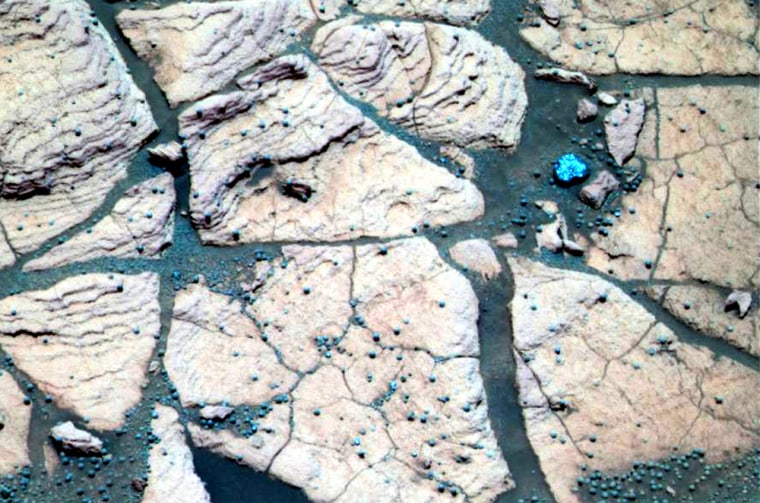With NASA's Mars rover Spirit nearing the end of its primary mission profile and its twin, Opportunity, more than halfway through its own, mission planners are preparing to give the two robots a longer leash while scaling back the number of people on the project.
Mission managers are looking ahead to an extended mission for both Spirit and Opportunity, which will kick in once the robots complete their first 90 Martian days, or sols. To prepare for what is expected to be at least a few more months of Mars exploration, NASA officials plan to cut the 300 scientists and engineers on the mission by more than a third, according to one mission manager.
"We are going to be reducing the staff and slowing down as [the rovers] get later into their lifetimes," Mark Adler, a manager for the Mars Exploration Rover mission, said during a press briefing Thursday at NASA's Jet Propulsion Laboratory in Pasadena, Calif. "We're trying to get more people on Earth time than on Mars time."
Much of the team had been waking and sleeping on cue to the Martian sol, which is almost 40 minutes longer than an Earth day.
A more earthly schedule
Rover project manager Richard Cook said that with the exception of about 10 people who are needed to maintain the rovers and man the Deep Space Network of receiving stations on Mars time, everyone else on the project will be living on a more earthly schedule.
"We're going to shift in kind of an incremental way," Cook told Space.com, adding that he is already on the Earth-time schedule. Those researchers and engineers not remaining with the rover mission will be shifted over to other JPL missions, he added.
JPL officials said downsizing the rover mission team is possible because the team itself has become more proficient at planning future activities. Where it used to take 18 hours each day to plan the next sol's worth of science and navigation activities at the mission's outset, it now takes much less time, Cook said.
In the meantime, rover controllers plan to upload new flight software that will enhance each rover's navigation system to be bolder in its self-guided drives.
So far, Spirit has had an average daily driving distance of about 121 feet (37 meters) when assigned to long treks. Mission planners would like to see it boosted up to at least 164 feet (50 meters) a day so that the rover can eventually reach some hills that lie a month's travel or more in the distance.
Spirit is currently on the edge of Bonneville crater, and the hills sit to the southeast.
"We'd like to get Spirit to the hills as quickly as possible," Adler said.
Opportunity in high gear
Opportunity will most likely be able to travel farther and faster from its landing site in Meridiani Planum, due to the flat and relatively rock-free environment.
"Because Opportunity is basically in a parking lot, we believe we'll be able to tell the rover to [drive] blind for many, many meters, maybe 50 to 100 in a day," Adler said.
Right now, he added, Opportunity's cameras can see far across Meridiani Planum, and there is nothing standing in its way.
To date, Opportunity has spent the bulk of its 52 sols in Eagle crater, near the same spot it landed, to study a rock outcrop that scientists have concluded was soaked with water in the distant past. Mission controllers plan eventually to send the robotic rockhound across Meridiani Planum to a crater about 2,624 feet (800 meters) away.
The updated software package is also designed to put the rovers in a deep-sleep mode at night, shutting down all electronics. including an alarm clock that routinely awakens the robots when it's time to make a nightly call to orbiting spacecraft and relay data back to Earth.
Adler said the deep-sleep procedure is needed chiefly to conserve energy, which will soon be at a premium because dust buildup on the solar cells, as well as the progressing Martian winter, will cut into the rovers' ability to generate power. The onset of winter also means that nighttime temperatures will be colder, requiring more power just to maintain thermal control.
The deep-sleep program will also help Opportunity counter the effects of a faulty heater that has been stuck on since the rover landed, cutting its power at night.
